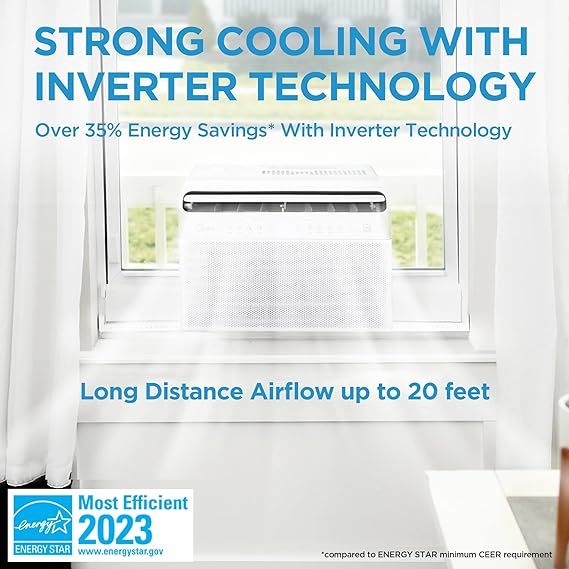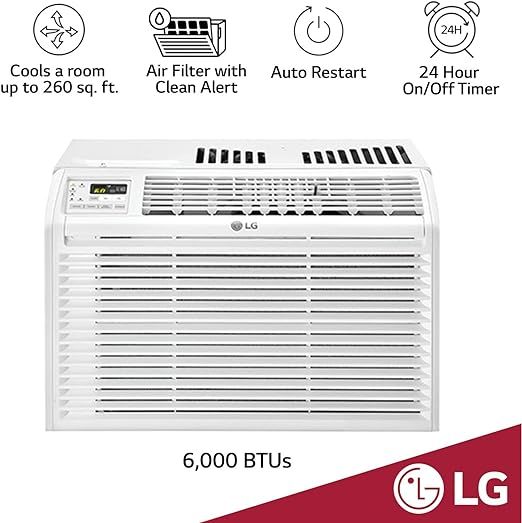How to Choose a Window Air Conditioner: A Comprehensive Guide
- Table of Contents
- 1. Introduction
- 2. Understanding BTU Ratings
- 3. Room Size Calculation
- 4. Energy Efficiency
- 5. Noise Level
- 6. Installation Considerations
- 7. Special Features
- 8. Brand Reputation and Warranty
- 9. Budget and Cost
- 10. Maintenance and Cleaning
- 11. Comparison of Top Models
- 12. Final Tips and Recommendations
- 13. Conclusion
Window air conditioners are a popular and cost-effective cooling solution for homes and offices. They are relatively easy to install, require less maintenance than central air conditioning systems, and can efficiently cool individual rooms or small areas. However, with numerous models and features available in the market, choosing the right window air conditioner can be challenging. This guide will help you navigate through the process of selecting the perfect unit for your needs.
Table of Contents
- Introduction
- Understanding BTU Ratings
- Room Size Calculation
- Energy Efficiency
- Noise Level
- Installation Considerations
- Special Features
- Brand Reputation and Warranty
- Budget and Cost
- Maintenance and Cleaning
- Comparison of Top Models
- Final Tips and Recommendations
- Conclusion
1. Introduction
Before delving into the details, it's essential to understand what a window air conditioner is and why it might be the right choice for you. A window air conditioner, as the name suggests, is installed in a window opening and cools the air inside a room by drawing warm air from the room, cooling it, and then circulating the cooled air back into the room. Excess heat is expelled outside through the rear of the unit.
2. Understanding BTU Ratings
BTU (British Thermal Unit) is a measure of the amount of heat a window air conditioner can remove from a room in an hour. The higher the BTU rating, the more powerful the unit is. It's crucial to match the BTU rating with the size of the room you wish to cool. Here are general guidelines for BTU ratings based on room size:
- Small Room (150–250 sq ft): 5,000–6,000 BTUs
- Medium Room (250–400 sq ft): 7,000–8,500 BTUs
- Large Room (400–550 sq ft): 9,000–12,000 BTUs
- Extra-Large Room (550+ sq ft): 14,000+ BTUs
It's important to note that these are rough estimates, and factors like ceiling height, insulation, and sunlight exposure can affect the required BTU.
3. Room Size Calculation
To accurately calculate the BTU requirement for your room, follow these steps:
- Measure the length and width of the room in feet.
- Multiply the length by the width to get the square footage.
- Use the BTU chart mentioned above to find the corresponding BTU range.
- Adjust for special circumstances:
- Add 10% if the room is heavily shaded.
- Add 600 BTUs for each person regularly occupying the room.
- Increase the BTUs by 10% for kitchens.
For example, if your room is 300 sq ft and gets moderate sunlight, you would likely need a unit rated at 7,500–8,000 BTUs.
4. Energy Efficiency
Energy efficiency is a significant factor when choosing a window air conditioner because it affects your long-term operating costs. The energy efficiency ratio (EER) measures the cooling output in BTUs divided by the electrical input in watts. A higher EER means greater efficiency. Look for units with an EER of 10 or higher.
Additionally, consider models with the Energy Star label, which indicates they meet strict energy efficiency guidelines set by the U.S. Environmental Protection Agency. Energy Star certified products can save you up to 30% on energy bills compared to non-certified models.
5. Noise Level
Noise levels can significantly impact your comfort, especially if the unit will be used in a bedroom or living area. Manufacturers typically list noise levels in decibels (dB). Lower numbers indicate quieter operation. Here's a general guideline:
- Below 50 dB: Very quiet, suitable for bedrooms
- 50–60 dB: Moderately quiet, good for living rooms
- Above 60 dB: Noisy, better for garages or workshops
Some models come with sleep modes or adjustable fan speeds to reduce noise during certain times.
6. Installation Considerations
Proper installation is crucial for the safe and efficient operation of your window air conditioner. Here are some points to consider:
- Window Type: Make sure the unit fits securely in your window type (casement, sliding, double-hung).
- Weight: Heavier units may require additional support brackets.
- Ventilation: Ensure proper ventilation to prevent condensation buildup.
- Safety: Install the unit away from flammable objects and ensure it is properly grounded.
If you are unsure about installing the unit yourself, consider hiring a professional.
7. Special Features
Modern window air conditioners come with various features that can enhance your comfort and convenience. Some common features include:
- Remote Control: Allows you to adjust settings from across the room.
- Timer: Lets you program the unit to turn on or off at specific times.
- Sleep Mode: Gradually increases temperature overnight to save energy.
- Dehumidifier: Helps control humidity levels in the room.
- Filter Indicators: Alert you when it's time to clean or replace filters.
- Smart Connectivity: Allows control via smartphone apps or voice assistants.
Choose the features that align with your needs and lifestyle.
8. Brand Reputation and Warranty
Brand reputation and warranty coverage are essential considerations. Well-known brands tend to offer better customer service and longer warranties. Research online reviews and consumer reports to gauge the reliability and performance of different brands. Additionally, check the warranty terms to see what parts and labor are covered and for how long.
9. Budget and Cost
Window air conditioner prices can range from under $200 to over $1,000, depending on the features and brand. Set a realistic budget before shopping and prioritize the features you truly need. Keep in mind that investing in a slightly more expensive but energy-efficient model could save you money in the long run.
10. Maintenance and Cleaning
Regular maintenance is necessary to keep your window air conditioner functioning optimally. Follow these tips:
- Clean or replace air filters monthly.
- Vacuum dust and debris from the exterior vents.
- Inspect and clean the evaporator and condenser coils annually.
- Drain the condensate pan periodically.
Proactive maintenance can extend the lifespan of your unit and improve its performance.
11. Comparison of Top Models
Let's compare some popular window air conditioner models to give you an idea of what's available:
| Model | BTU Rating | EER | Noise Level (dB) | Special Features |
|---|---|---|---|---|
| LG LW8017ERSM | 8,000 | 12 | 52 | Remote control |
| Frigidaire FFRA051WAE | 5,000 | 11 | 51 | Sleep mode |
| Haier ESAQ406T | 6,000 | 10 | 55 | Dehumidification |
This comparison highlights the differences in BTU ratings, energy efficiency, noise levels, and special features among popular models.
12. Final Tips and Recommendations
- Measure Twice, Buy Once: Double-check your room measurements and BTU calculations.
- Read Reviews: Check user feedback and expert opinions before purchasing.
- Test Before Season: Install and test your new unit before peak summer months.
- Keep It Clean: Regular cleaning and maintenance will prolong the unit's life.
13. Conclusion
Selecting the right window air conditioner requires careful consideration of various factors, including BTU rating, energy efficiency, noise level, installation requirements, special features, brand reputation, and budget. By following the guidelines outlined in this comprehensive guide, you can confidently choose a window air conditioner that meets your cooling needs and provides lasting comfort throughout the hottest seasons.







